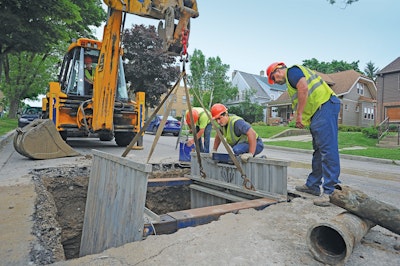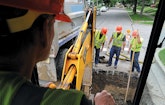
Village of Shorewood utility operators (from left) Kyle Pinzer, Erickson, Sterr, Bill Nowak and Kunze. Not pictured: Dave Brunker.
Shorewood Water Works may be old, but that doesn’t discourage the staff from doing everything they can to make the system current and cost effective.
Sitting around the conference table in the antique, cream-and-red brick Public Works building north of downtown Milwaukee, Leeann...








